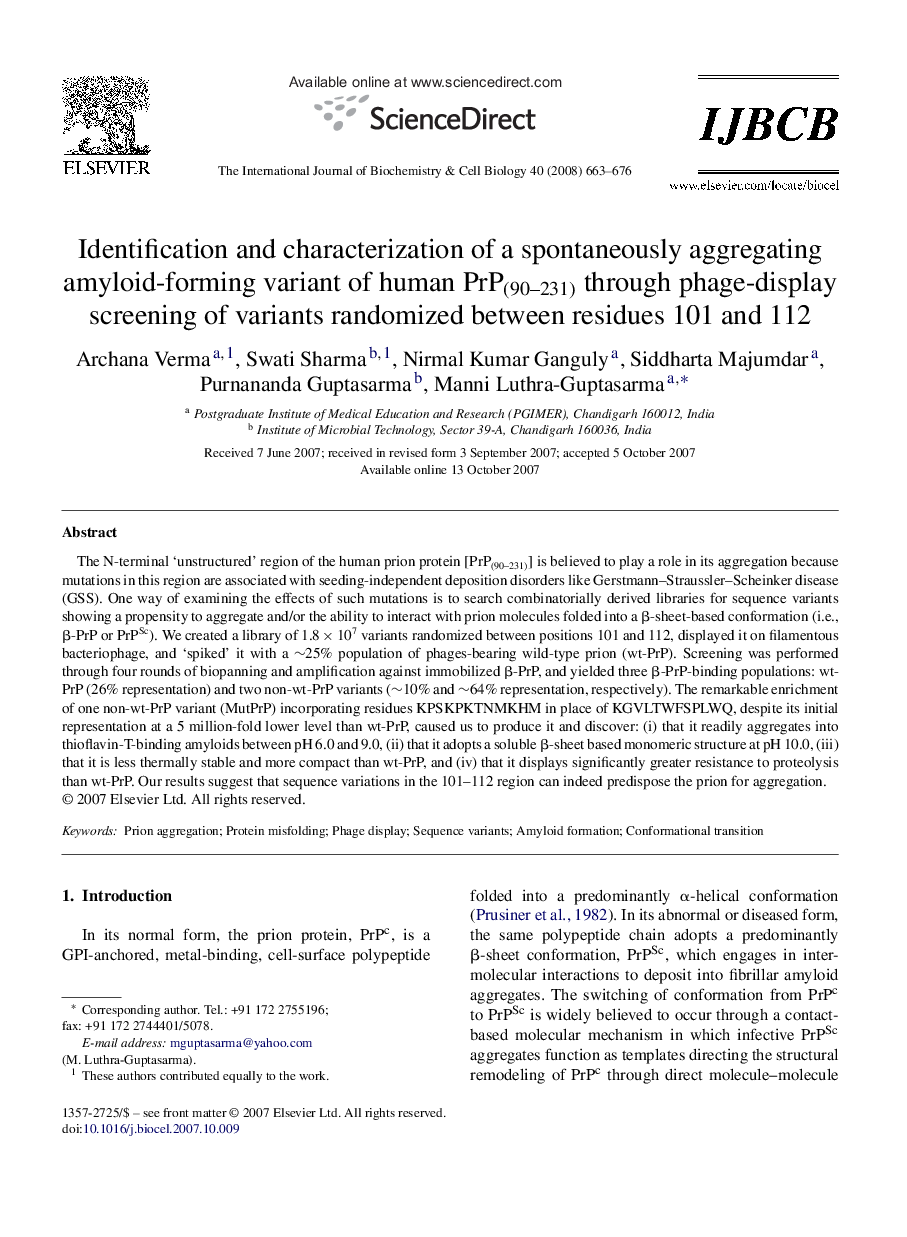| Article ID | Journal | Published Year | Pages | File Type |
|---|---|---|---|---|
| 8326271 | The International Journal of Biochemistry & Cell Biology | 2008 | 14 Pages |
Abstract
The N-terminal 'unstructured' region of the human prion protein [PrP(90-231)] is believed to play a role in its aggregation because mutations in this region are associated with seeding-independent deposition disorders like Gerstmann-Straussler-Scheinker disease (GSS). One way of examining the effects of such mutations is to search combinatorially derived libraries for sequence variants showing a propensity to aggregate and/or the ability to interact with prion molecules folded into a β-sheet-based conformation (i.e., β-PrP or PrPSc). We created a library of 1.8 Ã 107 variants randomized between positions 101 and 112, displayed it on filamentous bacteriophage, and 'spiked' it with a â¼25% population of phages-bearing wild-type prion (wt-PrP). Screening was performed through four rounds of biopanning and amplification against immobilized β-PrP, and yielded three β-PrP-binding populations: wt-PrP (26% representation) and two non-wt-PrP variants (â¼10% and â¼64% representation, respectively). The remarkable enrichment of one non-wt-PrP variant (MutPrP) incorporating residues KPSKPKTNMKHM in place of KGVLTWFSPLWQ, despite its initial representation at a 5 million-fold lower level than wt-PrP, caused us to produce it and discover: (i) that it readily aggregates into thioflavin-T-binding amyloids between pH 6.0 and 9.0, (ii) that it adopts a soluble β-sheet based monomeric structure at pH 10.0, (iii) that it is less thermally stable and more compact than wt-PrP, and (iv) that it displays significantly greater resistance to proteolysis than wt-PrP. Our results suggest that sequence variations in the 101-112 region can indeed predispose the prion for aggregation.
Related Topics
Life Sciences
Biochemistry, Genetics and Molecular Biology
Biochemistry
Authors
Archana Verma, Swati Sharma, Nirmal Kumar Ganguly, Siddharta Majumdar, Purnananda Guptasarma, Manni Luthra-Guptasarma,
